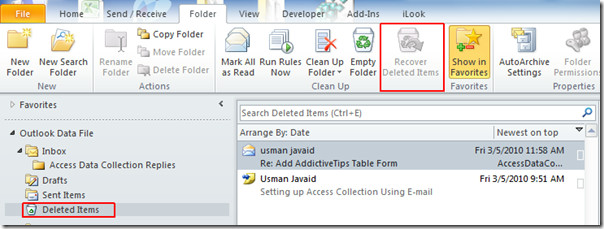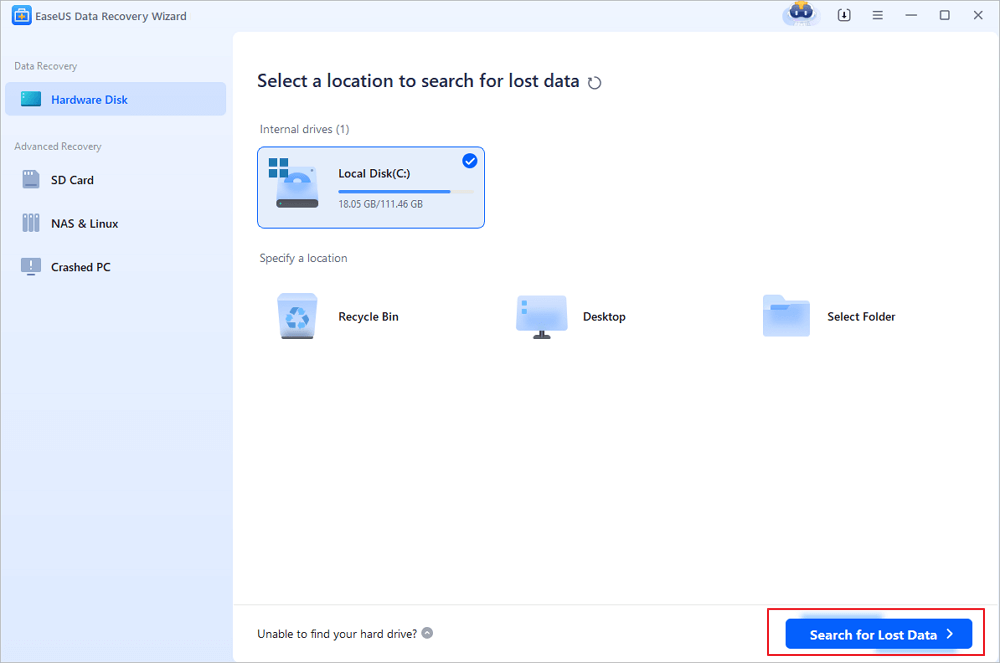
Off for PST folders.ģ - On for the "Deleted Items" folder in a Microsoft Exchange mailbox and for public folders. HKEY_LOCAL_MACHINE\SOFTWARE\Microsoft\Exchange\Client\OptionsĠ - Off for Exchange mailbox folders, for PST folders, and for public folders.ġ - On for Exchange mailbox folders, for PST folders, and for public folders.Ģ - On for Exchange mailbox folders and for public folders.

Use DumpsterControl to remove the Recover Deleted Items command on the Tools menu by adding the DWORD value "DumpsterControl" to the registry and setting its value to 0.īrowse to the following registry key using regedit: Restart Outlook and you'll be able to recover newly deleted items from any folder in Outlook. then use Open folder and double click on the downloaded file. Right click on it and choose Save target as. If you don't want to edit the registry, you can use this file to set it: DumpsterAlwaysOn registry file.īecause this registry key is in the Local Machine hive, you'll need to save the file then run it from your hard drive. HKEY_LOCAL_MACHINE\Software\Microsoft\Exchange\Client\Options To set the DumpsterAlwaysOn key, open the registry editor and browse to

Set the value to 0 to disable it for folders other than the Deleted items folder. With this value set to 1, you can use the recover deleted items while viewing any folder. Setting this value in Outlook 2007 and up enables deleted items recovery for shared mailboxes. In Outlook 2007 and newer, you do not need to add the key to the registry in order to be able to recover data from any folder in the default mailbox. This key is valid in all versions of Outlook when used with Exchange server mailboxes. So many places to look, but with proper network security, the data will be secure and users will be compliant with existing laws. If the organization archives messages as they arrive they could be somewhere in the network. If the user deleted the items using Shift+Delete, they may look deleted but will be accessible in Recover Deleted Items when the DumpsterAlwaysOn key is enabled.ĭeleted items may be covered by a Deleted Item Retention policy in Exchange, preventing the user from deleting the messages from Recover Deleted Items. If the network is secure, the data will be secure but there are more places where the messages may be stored. Items deleted from Outlook and Exchange server mailboxes complicates matters and it's more likely you'll be able to recover the deleted items.

Recovering Deleted items in Exchange accounts Compacting the data file after emptying the Deleted items folder will eliminate the ability to recover deleted items. As time passes and new mail arrives or after the PST is compacted, the ability to recover deleted messages go down dramatically. When Outlook is configured to use a PST and you use Shift+Delete (recommended for messages you don't want recovered) or Delete then empty the Deleted items folder, someone would need to use a third party application to have any chance of recovering the messages. If so, they will be easily recovered by anyone with access to your mailbox. If you use Exchange mailbox, its possible the messages are stored on the server for a period of time before they are permanently deleted. If you use IMAP or MSN, deleted items can't easily be recovered from the local store, but you'll need to verify they were deleted from your mailbox online.

If you use a POP3 account, no, a hacker can't easily recover your deleted items - and neither can you. pst files, you'll need to find the deleted items yourself. To find deleted appointments or contacts, sort by the icon field. Find the approximate date you deleted the items. To find specific items in the Deleted Items folder of an Exchange mailbox when you know approximately when you deleted them, close the reading pane, add the Modified date field to the view and sort by it. They are aware that forensic methods exist that can recover deleted files from a hard drive but wanted to know if an average (or above average) user or a hacker could recover messages after the Deleted items folder is emptied. The questions weren't from users who wanted to recover accidentally deleted email, but from users who receive sensitive information by email, including personal information and credit card numbers, and need to comply with laws addressing the security of personal information in the event of a data breach. I had questions recently inquiring about recovering deleted email.


 0 kommentar(er)
0 kommentar(er)
